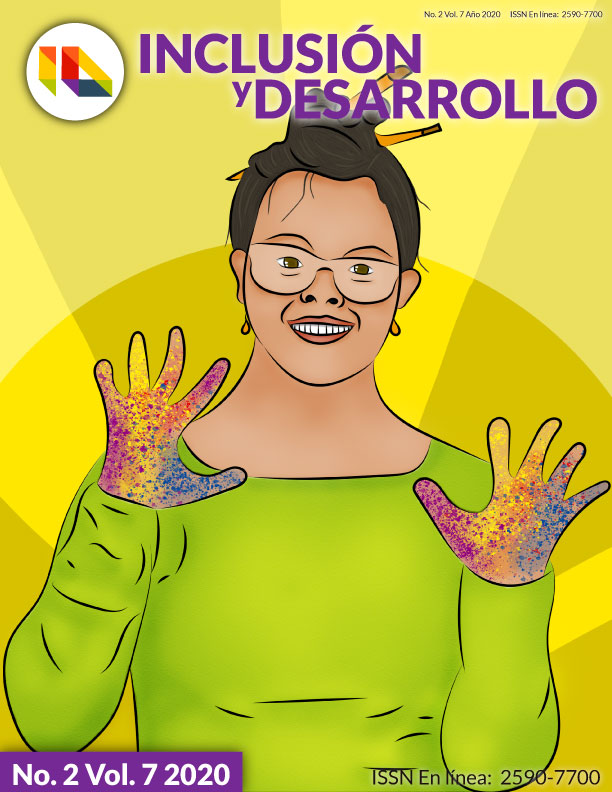Diálogo de memoria a partir del trabajo colaborativo y la producción transmedia: #terremoto83
Barra lateral del artículo
Cómo citar
Detalles del artículo

Esta obra está bajo una licencia internacional Creative Commons Atribución 4.0.
Contenido principal del artículo
Resumen
El 31 de marzo de 1983 a las 8:15 de la mañana un sismo de 5,5 en la escala de Richter sacudió durante aproximadamente 18 segundos a la ciudad de Popayán. A partir de este momento la historia de la capital del departamento del Cauca se dividió en un antes y un después. En la búsqueda de las voces y protagonistas del proceso posterior al terremoto nace #terremoto83, un proyecto de investigación-creación diseñado desde una perspectiva que tiene en cuenta elementos de la comunicación, el arte contemporáneo y la opción decolonial, pensado con el objetivo de generar espacios de encuentro, memoria colectiva y diálogo intergeneracional entre los habitantes de Popayán sobre uno de los acontecimientos recientes más significativos de la ciudad. #terremoto83 se desarrolla a través de una propuesta metodológica dividida en tres momentos clave: Diseño de la narrativa y planificación de los componentes que hacen parte de la estrategia/experiencia, su implementación y finalmente su documentación y sistematización. La experiencia, que contó con la participación activa de diversos públicos mediante la generación, uso e interacción de contenidos, utilizó diversos recursos y herramientas digitales, expandiendo el relato a través de múltiples medios, soportes y lenguajes. Entre sus principales resultados, #terremoto83 obtuvo una mirada más allá del relato oficial del hecho, pensando a la periferia como uno de los espacios de lucha y transformación urbanística y social de la ciudad blanca de Colombia.
Referencias
-Cazau, P. (2006). Introducción a la Investigación en Ciencias Sociales. 3a ed. Buenos Aires.
-Flores, J. Porto, D. (2012). Periodismo Transmedia. Reflexiones y técnicas para el ciberperiodista desde los laboratorios de medios interactivos. Editorial Fragua. Madrid.
-Franco M. & Pellicer, M. (2014). Optimismo para periodistas: claves para entenderlos nuevos medios de comunicación en la era digital. p. 114.
-Igarza, R. (2009). Burbujas de ocio: nuevas formas de consumo cultural. 1a ed. Buenos Aires: La Crujía, 245 p. InclusionesFuturibles. ISBN 9789876010719.
-Jenkins, H. (2008) Convergence Culture. La cultura de la convergencia de los medios de comunicación. Paidos. Barcelona.
-López, N. Sandoval, I. (2006). Métodos y técnicas de investigación cuantitativa y cualitativa. Sistema de Universidad Virtual, Universidad de Guadalajara.
-Lovato, A. (2017). Plantilla para Diseño de Narrativas Transmedia. Plantilla de trabajo en desarrollo del curso I+DOC – Webdocs y Documentales Transmedia, Maestría en Comunicación Digital Interactiva. Universidad Nacional de Rosario. Argentina.
-Osorio, N. (2019). Informe final Proyecto #terremoto83. Universidad del Cauca. Documento de trabajo. Peñafiel, C. (2016). Reinvención del periodismo en el ecosistema digital y narrativas transmedia. En: adComunica. Revista Científica de Estrategias, Tendencias e Innovación en Comunicación, nº12. Castellón: Asociación para el Desarrollo de la Comunicación adComunica, Universidad Complutense de Madrid y Universitat Jaume I, 163-182. DOI: http://dx.doi.org/10.6035/2174-0992.2016.12.10 p. 166.
-Rost, A., Bernardi, M., & Bergero, F. (2016). Periodismo transmedia, la narración distribuida de la noticia (Primera edición ed.). Recuperado de http://rdi.uncoma.edu.ar/handle/123456789/15341
-Sánchez, A. (2019). NARRATIVAS ESTÉTICAS CONTEMPORÁNEAS, CONSTRUCCIÓN DE IDENTIDADES URBANAS EN LAS NOVELAS OSCURO POR CLARITAS, CIUDAD DE NIEBLA, Y EN LOS FILMES ARGUMENTALES OCCIDENTE Y MARCANDO CALAVERA DESDE LA PERSPECTIVA DE CIUDAD EDUCADORA. Recuperado de http://repositorio.unicauca.edu.co:8080/handle/123456789/1928.
-Scolari C & Establés M. (2017). El ministerio transmedia: expansiones narrativas y culturas participativas. Palabra Clave 20(4), 1008-1041. DOI: 10.5294/pacla.2017.20.4.7.
-Scolari C. & Piñón, J. (2016). Las narrativas transmedia en el mercado audiovisual latino de Estados Unidos. Actores, contenidos y estrategias. Comunicación y Sociedad (0188-252X), 27, 13–52. p. 25 -Scolari, C. (2018). Las Leyes de la Interfaz. Diseño, ecología, evolución, tecnología, Barcelona, Editorial Gedisa. 2018, 176 pp.





